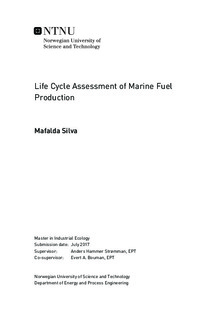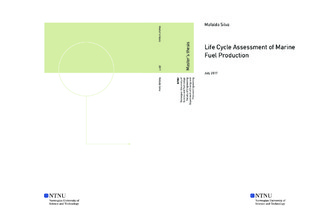| dc.description.abstract | Currently, maritime transport represents over 80% of the global trade, and accounts for a significant share of the total global emissions of CO2, NOX and SOX., Due to the increased awareness of the impacts of maritime transport on climate, human health and ecosystems, regulations were enforced by the International Maritime Organization (IMO) to decrease NOX and SOX emissions, and several abatement measures were proposed as a means to decrease CO2 emissions.
Low-sulfur marine fuels have been pointed out as an option to comply with the tightening regulations with regards to SOX emissions, both inside and outside maritime Emissions Control Areas (ECAs). In this context, this study aims to assess if a low-sulfur marine fuel, LSHFO, leads to a decreased impact from a life cycle perspective when compared to the most used fuel by the maritime sector, heavy fuel oil (HFO). The study comprises the modeling of a generic refinery, providing a step forward from previous research in the assessment of marine fuel impacts at the refinery gate, as well as the modeling of a Bulk Carrier operation, thus comprising a full life cycle assessment.
Results showed that at the refinery gate, crude oil extraction is the process that contributes most to the total impacts associated with the production of HFO and LSHFO. For LSHFO, it was found out that hydrogen and electricity production also play an important role, due to the sulfur removal process. On the other hand, from a life cycle perspective, results showed that the combustion of HFO and LSHFO during the operation phase is the most contributing process for the total impacts towards GWP and TAP, and also present a significant contribution for PMFP and MEP. In addition, results pointed out that a shift from HFO towards LSHFO presents trade-offs between impact categories. LSHFO presented a worst environmental performance than HFO in terms of impacts on climate, leading to an increase of approximately 2% for GWP. It was found out that this increase occurs upstream, during the refining process of LSHFO due to higher energy and hydrogen requirements, and increases are only partly offset during the operation phase. Nonetheless, results showed a 47% and 19% decrease of the total impacts towards TAP and PMFP when LSHFO is used instead of HFO, which is directly linked to the reduced sulfur content of the fuel. | |

